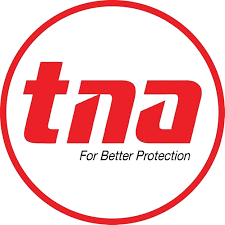If you’ve ever set foot in a lab, you know it’s not all about beakers, test tubes, and microscopes. There’s something even more important at play: safety equipment. Imagine handling dangerous chemicals or performing an experiment without proper safety measures. It sounds risky, right? But with the right safety gear, those risks can be minimized or completely avoided. In this blog, we’ll break down exactly what lab safety equipment is and why it’s an absolute must in every laboratory setting.
The Basics: What Is Lab Safety Equipment?
At its core, lab safety equipment refers to the tools and gear designed to protect individuals from potential hazards in a lab environment. Whether it’s working with chemicals, heat, or biological materials, safety equipment helps reduce the likelihood of accidents and injuries.
Think of it as your lab’s first line of defense. Safety equipment comes in various forms, from personal protective gear like gloves and goggles to safety stations like eyewash stations and fire extinguishers. These items aren’t just nice to have—they’re essential for keeping you safe while working in a potentially hazardous environment.
Some of the most common types of lab safety equipment include:
-
Personal Protective Equipment (PPE): Gloves, goggles, lab coats, and face shields
-
Emergency Equipment: Eyewash stations, safety showers, first aid kits
-
Fire Safety: Fire extinguishers, fire blankets, and flame arrestors
-
Ventilation Systems: Fume hoods and exhaust systems
-
Spill Containment: Spill kits and absorbent pads
Each of these pieces of equipment serves a unique purpose and plays a crucial role in maintaining a safe working environment.
Why Lab Safety Equipment Is a Non-Negotiable
You might be considering whether all this equipment is truly necessary. Let’s take a moment to think about the consequences of not using safety equipment. A single slip-up could result in anything from minor burns to life-threatening accidents. That’s why safety equipment is non-negotiable in any lab, whether it’s a classroom, research lab, or even a home experiment setup.
-
Protection Against Chemical Hazards
Labs often involve the use of corrosive, toxic, or flammable substances. Accidental spills, splashes, or fumes can cause serious harm. For instance, a chemical burn from sulfuric acid can be devastating if you’re not wearing proper gloves or goggles. With the right safety equipment, these risks are significantly reduced. -
Preventing Fires and Explosions
Labs, especially those handling flammable materials, can be prone to fire hazards. Imagine a Bunsen burner or a heating plate in close proximity to flammable chemicals. Fire extinguishers, fire blankets, and flame arrestors are absolutely essential for managing these risks. Without these tools, a small flame can quickly turn into a disaster. -
Emergency Preparedness
Accidents happen, no matter how careful you are. That’s why emergency safety equipment like eyewash stations and safety showers are critical. If a chemical splash happens, having immediate access to eyewash stations could mean the difference between a quick recovery and permanent damage. Similarly, a safety shower can help rinse off harmful substances from the body in case of a spill. These stations are life-saving tools that no lab should operate without. -
Legal and Institutional Compliance
Most educational institutions and research facilities are required to adhere to strict safety regulations. These guidelines aren’t just suggestions—they’re mandates from organizations like OSHA (Occupational Safety and Health Administration) or the CDC (Centers for Disease Control and Prevention). Not having the proper safety equipment in place could lead to hefty fines or, worse, lab shutdowns. So, investing in the right safety gear is not just about protecting your team; it’s about complying with safety laws.
Choosing the Right Safety Equipment for Your Lab
When it comes to selecting safety equipment for your lab, the options can seem overwhelming. The key is to assess your lab’s needs based on the specific experiments or tasks you’ll be performing.
-
Consider Your Lab’s Work: If your lab is focused on biology, you may need protective gloves, masks, and biohazard disposal equipment. A chemistry lab, on the other hand, will need equipment to handle chemicals, such as fume hoods and chemical-resistant aprons.
-
Invest in Quality: It’s tempting to go for cheaper options, but remember that the safety of your team is at stake. Opt for high-quality, durable safety gear that meets regulatory standards.
-
Regular Maintenance: Having the right equipment is only half the battle—maintenance is just as important. Safety equipment should be inspected regularly to ensure it’s functioning properly. For example, make sure fire extinguishers are fully charged, eyewash stations are flushed, and ventilation systems are working.
How Lab Safety Equipment Saves Lives
To really drive home the importance of lab safety equipment, let’s look at a couple of real-life scenarios.
Imagine a high school chemistry lab where a student accidentally drops a flask containing a flammable liquid. Without a fire extinguisher in sight, the fire could quickly spread, putting everyone in danger. But with a fire extinguisher on hand, the fire can be put out immediately, preventing a potentially catastrophic situation.
In another case, a researcher working with hazardous chemicals accidentally splashes some in their eyes. With access to an eyewash station, they can rinse their eyes within seconds, significantly reducing the chance of lasting damage. Without it? The consequences could be severe.
These are just two examples, but they highlight why lab safety equipment isn’t just about avoiding minor inconveniences. It’s about preventing accidents that can change lives forever.
Conclusion: Prioritize Safety in Your Lab
Whether you’re a teacher, researcher, or hobbyist, safety should always be your top priority in the lab. The right safety equipment isn’t just a formality; it’s an investment in the well-being of everyone in the lab. From protective gear to emergency stations, these tools are essential for reducing risks and creating a safe working environment.
So, if you haven’t already, take the time to assess your lab’s safety needs. Ensure that the proper equipment is in place, maintained, and easily accessible. By doing so, you’re not just following safety regulations—you’re making a commitment to protect lives and foster a secure learning or research environment. Because when it comes to lab safety, there’s no such thing as being too cautious.
























